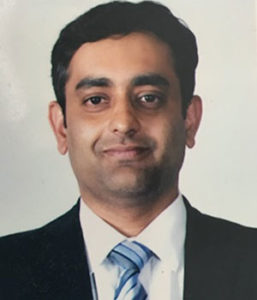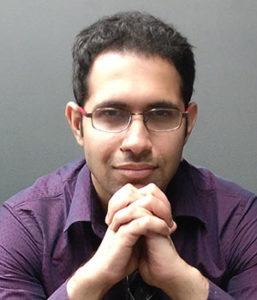If we want to end violence against doctors we need to change the attitudes of healthcare providers and the patient community towards one another, say Manjul Tripathi and Nishant Yagnick
Earlier this year, while working in the emergency department of a government hospital in India, I responded to a growing commotion in the resuscitation area. A patient’s relative had assaulted a junior resident, who was trying to resuscitate a patient in shock. It appears that the patient’s relatives got aggressive when they presumed that their relative was experiencing too much pain from the procedure.
Within a single long queue of patients in our outpatient department, we witness the many different Indias that exist within our country. We still find the occasional septuagenarian humble villager who tries (despite protest) to touch a young doctor’s feet as a mark of respect for their services. But now, we find an increasing population of aggressive patients and relatives, who admonish the clinician for how long they have had to wait in line. This impatience and intolerance is a common trend in developing societies with swiftly changing socioeconomic structures. Healthcare providers in India are grossly underprepared for this transformation—lacking the infrastructure and political willingness to support them. As a result, we now witness a continuum of discontent, aggression, and violence in the patient population.
Similar incidents are now a frequent and under-reported part of medical practice in India. The Indian Medical Association reported that 75% of doctors face verbal or physical abuse inside hospital premises. A cycle of violent strikes and negative media coverage has tarnished the image of the medical community in India. Many people now view doctors with a feeling of troubled dependence.
If you ask anyone working in a public sector hospital about the reasons behind such incidents, the universal answer would be “numbers”—and to some extent they are right. But although the lack of infrastructure and a poor physician-patient ratio have been a part of medicine for decades, the recent increase in violence causes us to delve deeper into the changing psychology of the Indian population. On the one hand, the general population is bombarded by unsupervised advertisements suggesting easy, one-shot cures, and oversimplified medicine. On the other hand, there are constant news reports (often inaccurate and judgmental) of medical negligence that continue to shake people’s faith in doctors.
The many stories of medical achievement tend not to be reported as frequently as the few reports of negligence. Patients from poorer backgrounds tend to accept whatever facility a public sector hospital can provide. The very rich seek care only in expensive private sector hospitals. Yet the middle class (which has increased significantly in number with the economic liberalisation of the country) is left in limbo. They cannot afford private sector hospitals for prolonged treatment because of the cost and yet they are highly discontent in the public sector hospitals, where the volume of patients is huge and facilities are limited. This group of patients are educated and demand proper counselling, which is often not provided to them due to a lack of time and soft skills among practitioners—particularly overburdened residents.
A large part of a resident’s duty therefore takes a form of triage. Prioritisation in the face of volume is essential. Communication skills are even more essential, as are qualities such as empathy. We need to work on self-analysis to diffuse mob behavior; team building; systemisation; and reducing physician stress, burnout, and psychological pressure from treatment mistakes and failures. Practically, the total number of classes currently given to developing soft skills in the Indian medical curriculum is negligible. The present attitude of medical educators can be likened to an “old school” swimming instructor who throws naïve doctors into the water thinking that they will learn to float by themselves. The result is a ticking time bomb in every hospital in the country.
Stronger punishment is not an effective solution. In 2010 the Doctors Protection Act was established, which proposed harsher punishment for the perpetrators of violence in hospitals, but in vain. While fear of the law is a significant deterrent for many crimes, this does not seem to be true in the case of healthcare.
Improving facilities is used as idealist banter. There is neither a concrete plan, nor any acknowledgement of the change in society that is being brought about by economic growth and social media. The only palpable solution to this is a change in the attitudes of healthcare providers and the patient community towards one another.
Patient partnership is changing medical practice across the world. A similar sea change is necessary in India. In a land where swamis and soothsayers make more television appearances than doctors, society needs a strong medical role model. Someone who can use the media to educate rather than sensationalise and give the medical profession an “image makeover.” Treatment can no longer be about “us and them.” No doctor enters a hospital with the intention of harming a patient, nothing can be learnt without making mistakes, and no outcome can be optimised in the face of limited facilities without co-operation and safety for themselves in mind. It is time that society understands this, and it is our job to explain it to them.
 Manjul Tripathi, assistant professor, Department of Neurosurgery, Post Graduate Institute of Medical Education and Research, Chandigarh, India.
Manjul Tripathi, assistant professor, Department of Neurosurgery, Post Graduate Institute of Medical Education and Research, Chandigarh, India.
Competing interests: None declared.
 Nishant Yagnick, registrar, Department of Neurosurgery, Post Graduate Institute of Medical Education and Research, Chandigarh, India.
Nishant Yagnick, registrar, Department of Neurosurgery, Post Graduate Institute of Medical Education and Research, Chandigarh, India.
Competing interests: None declared.
